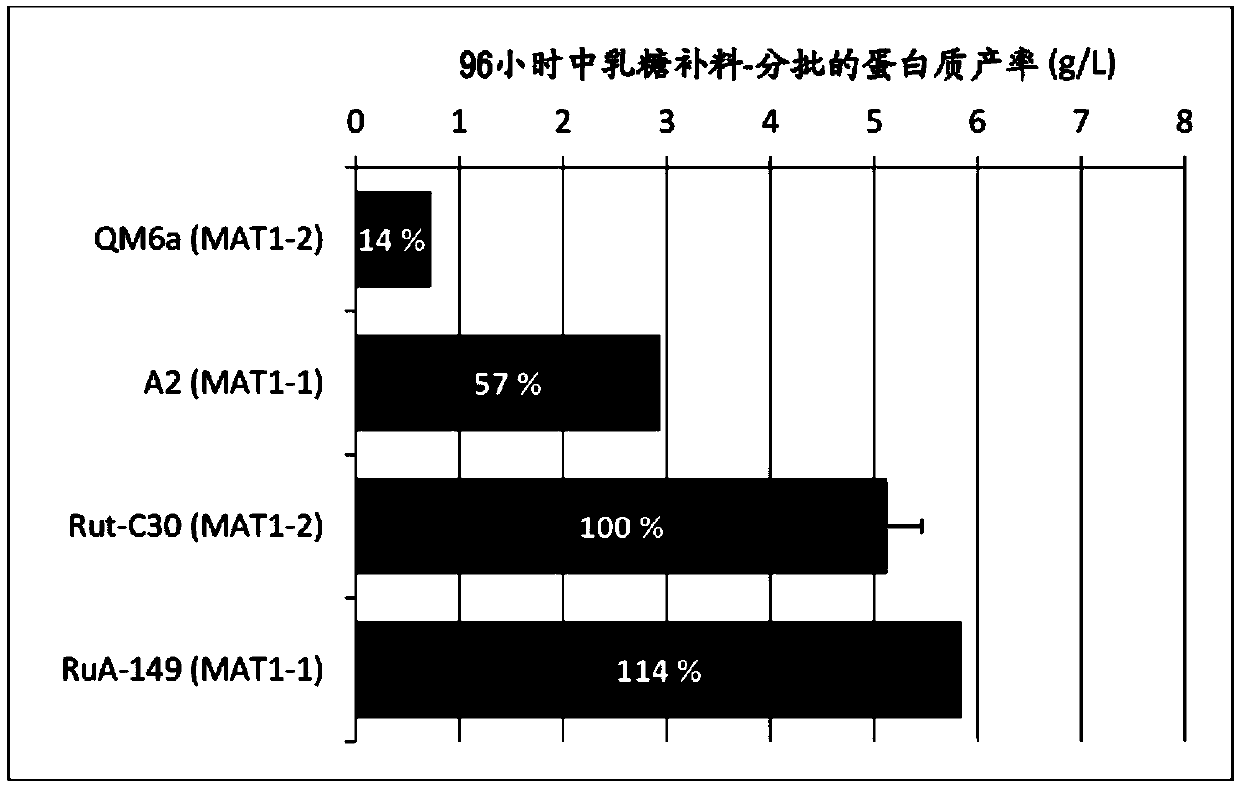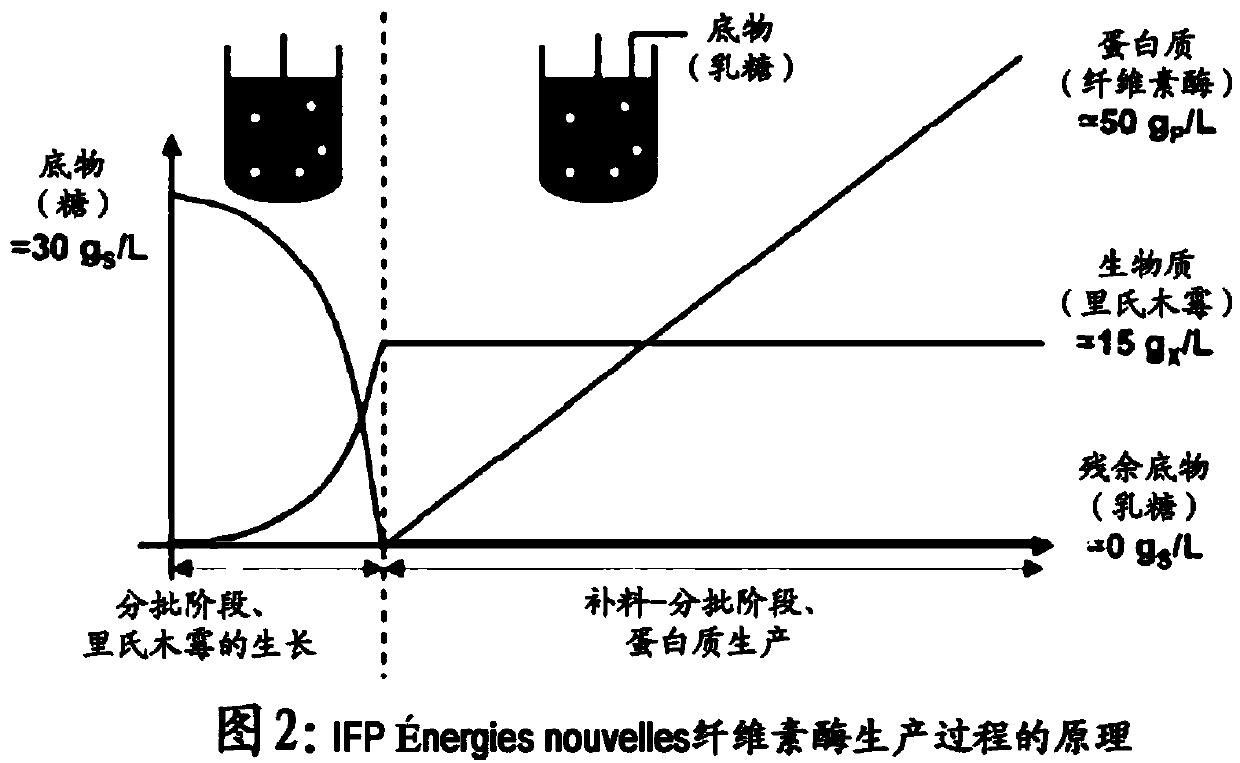Hyperproductive trichoderma reesei strain featuring improved beta-glucosidase activity
A technology of Trichoderma reesei and strains, applied in the direction of glycosylase, enzyme, hydrolase, etc., can solve the problem that Trichoderma reesei cannot reproduce sexually
- Summary
- Abstract
- Description
- Claims
- Application Information
AI Technical Summary
Problems solved by technology
Method used
Image
Examples
Embodiment 1
[0052] Embodiment 1: preparation according to the bacterial strain of the present invention (being the bacterial strain deposited with preservation number CNCM 1-5221) and determining its characteristics
[0053] 1. Preparation
[0054] The cellulase high producing strain RutC30 (or Rut-C30) (Montenecourt and Eveleigh, 1977) was crossed with strain A2 according to the protocol described by Seidl et al. Strain RutC30 (deposited with ATCC under accession number 56765) was obtained by three mutagenesis steps of strain QM6a and is one of the best producers of cellulases in the public domain (Peterson and Nevalainen, 2012).
[0055] After hybridization, multiple ascospore isolation campaigns were performed. 295 purified offspring were obtained. The latter were then screened in three steps. These successive screens made it possible to reduce the number of candidates from a few hundred to the individual with the highest cellulase production performance.
[0056] 2. Cellulase Prod...
Embodiment 2
[0079] Example 2: Preparation of a fertile cross between a bacterial strain according to the present invention (i.e. a strain deposited under the deposit number CNCM 1-5221) and a female sterile MAT1-2 bacterial strain
[0080] Strain RuA-149 was crossed with MAT1-2 female sterile Trichoderma reesei MAT1-2 from isolate QM6a. MAT1-1IDC1 strains A2 and QM6a (Linke et al., 2015) were used as positive controls (fertile cross). Hybridization by confrontation: The strains are inoculated in rows facing each other with approximately 1.5 cm between the two strains. Each row contained 4-6 inoculum of the same strain from conidia plates or cryovials. Hybrids are fertile when the ascospores are expelled from the ascothecia contained in the stroma. The expulsion of ascospores was observed by the presence of a yellowish substance in the orifices of the ascospores. Crosses were performed with strains RutC30, Cl847, QM9414 and Tu-6. The results are given in Table 2 below. The pedigrees o...
PUM
 Login to View More
Login to View More Abstract
Description
Claims
Application Information
 Login to View More
Login to View More - R&D
- Intellectual Property
- Life Sciences
- Materials
- Tech Scout
- Unparalleled Data Quality
- Higher Quality Content
- 60% Fewer Hallucinations
Browse by: Latest US Patents, China's latest patents, Technical Efficacy Thesaurus, Application Domain, Technology Topic, Popular Technical Reports.
© 2025 PatSnap. All rights reserved.Legal|Privacy policy|Modern Slavery Act Transparency Statement|Sitemap|About US| Contact US: help@patsnap.com



